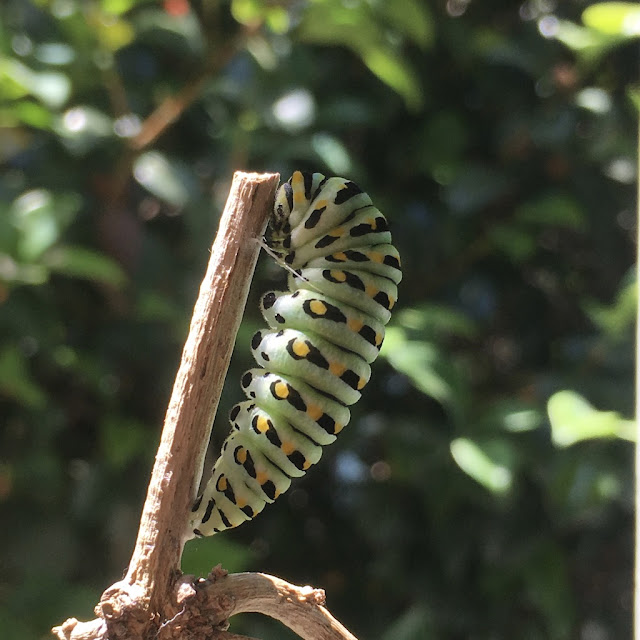The Joys and Perils of Rearing Butterflies
For a number of years, Robb and I have been collecting the anise swallowtail caterpillars we find on our garden fennel and rearing them in a tank. We do this to protect them from predation, and to bring a little bit of magic into our lives.
For the past few years, we've kept the tank outside. We have a really tiny house, and a box full of caterpillars takes up an awful lot of space.
This may be a beneficial choice. There's some indication that monarch butterflies raised indoors by commercial hatcheries lose their ability to migrate, which means that those butterflies one buys to release at weddings or for school events may be doomed from the start.
The anise swallowtails we raise aren't migratory, but perhaps raising them outside may be better for them in ways we can't understand.
Or maybe I'm just fooling myself that there's any value in interfering in the natural order. Maybe I should leave well enough alone.
Last year, our caterpillars and chrysalises were devastated by parasitic wasps. We'd never seen these creatures before, and didn't immediately recognize that the insects in the tank -- that looked to us like fruit flies -- were deadly killers. Caterpillars are the prey of all manner of fascinating and disgusting parasites.
Somehow in our attempts to rear butterflies, we'd set up the perfect habitat for raising wasps.
This year, we're trying to be more careful. I'm keeping a very close eye on the developing caterpillars. If I spot a cocoon of a parasitic wasp, chuck it into the garden. What happens there is up to nature.
Robb's probably not thrilled about this, but I've been quarantining the youngest caterpillars on the dining room table. When they reach what I consider a "safe" age and size, I'll move them into the group tank.
I'm conflicted about all of this. It's pretty clear that raising caterpillars on a large scale can have devastating consequences for the butterflies. But I also know that caterpillars in our garden get eaten by the birds.
I'm really not sure if I should continue with this or not. I can't shake the feeling that I'm raising caterpillars for selfish reasons, because I get so much pleasure from releasing butterflies.
Am I doing this for the butterflies, or for myself?
I really can't answer this.





Comments